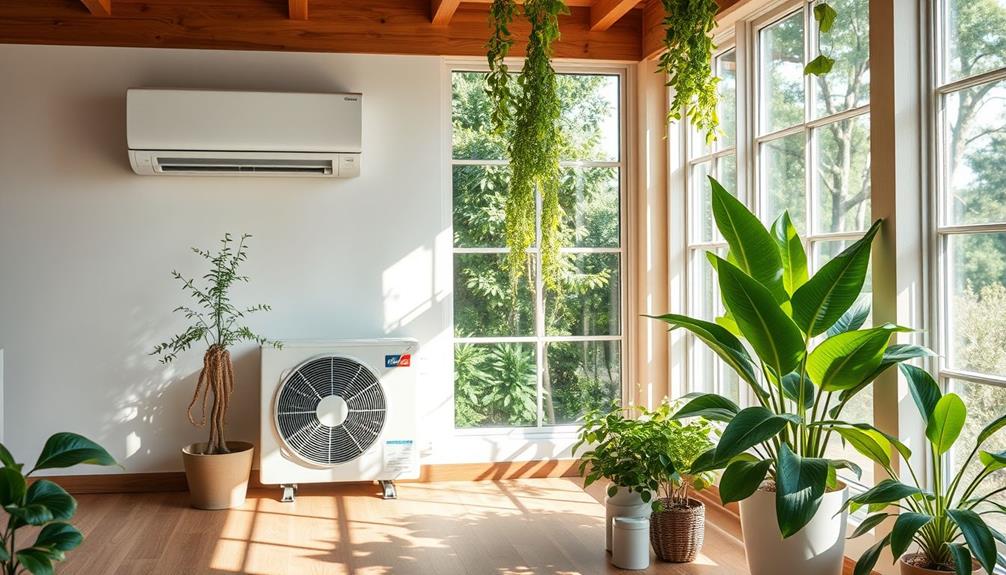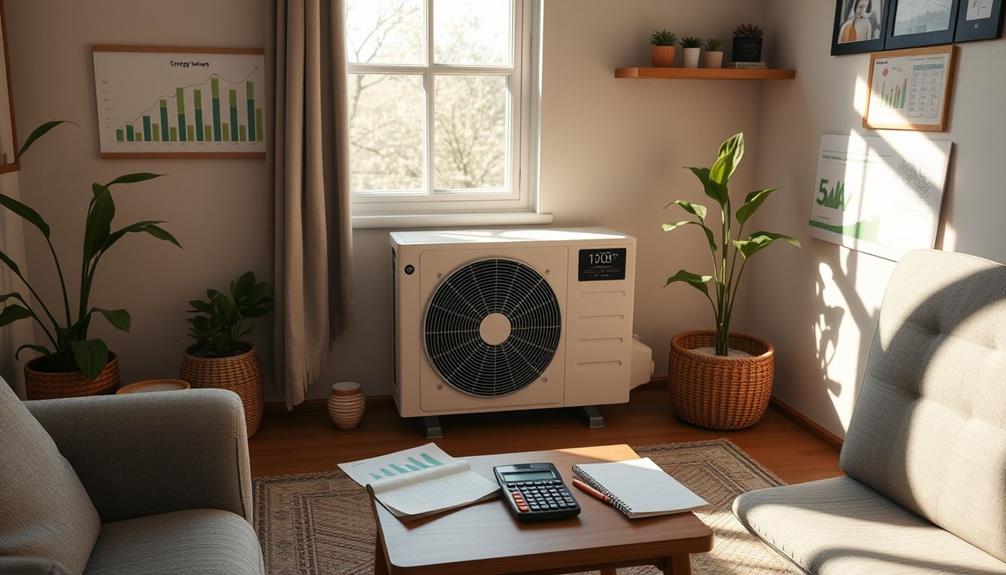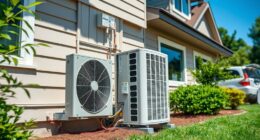Fed up with sky-high electricity costs? We have the perfect solution for you.
With high-efficiency heat pumps, you can slash your electric bills and save money. These innovative devices use advanced technology to provide efficient heating and cooling for your home.
In this article, we will explore the basics of high-efficiency heat pumps, energy efficiency ratings, and how they can reduce your electric bills.
Get ready to start saving and enjoy a more comfortable home.

Key Takeaways
- High-efficiency heat pumps transfer heat from one place to another, providing both heating and cooling capabilities.
- Energy efficiency ratings, such as SEER, HSPF, EER, and COP, help compare the efficiency levels of different heat pump models.
- High-efficiency heat pumps can result in lower energy consumption, reduced operating costs, and a positive environmental impact by reducing greenhouse gas emissions.
- Consider factors like square footage, level of insulation, climate, and thermostat compatibility when choosing the right heat pump for maximum energy efficiency and cost savings.
The Basics of High-Efficiency Heat Pumps
Let’s start by understanding the basics of how high-efficiency heat pumps work. Heat pumps are devices that transfer heat from one place to another, providing both heating and cooling capabilities. They work by utilizing the principles of thermodynamics and refrigeration cycles.
Heat pumps extract heat from the air, ground, or water sources and transfer it indoors or outdoors, depending on the desired temperature. The technology behind heat pumps allows them to deliver more energy than they consume, making them highly efficient.
The benefits of high-efficiency heat pumps are numerous. They can significantly reduce energy consumption, leading to lower utility bills. Additionally, they offer environmental benefits by reducing greenhouse gas emissions. High-efficiency heat pumps also provide reliable and consistent heating and cooling, ensuring comfortable indoor environments year-round.
Understanding Energy Efficiency Ratings for Heat Pumps
When it comes to heat pumps, understanding energy efficiency ratings is crucial. These ratings help us compare the efficiency levels of different models and make informed decisions.
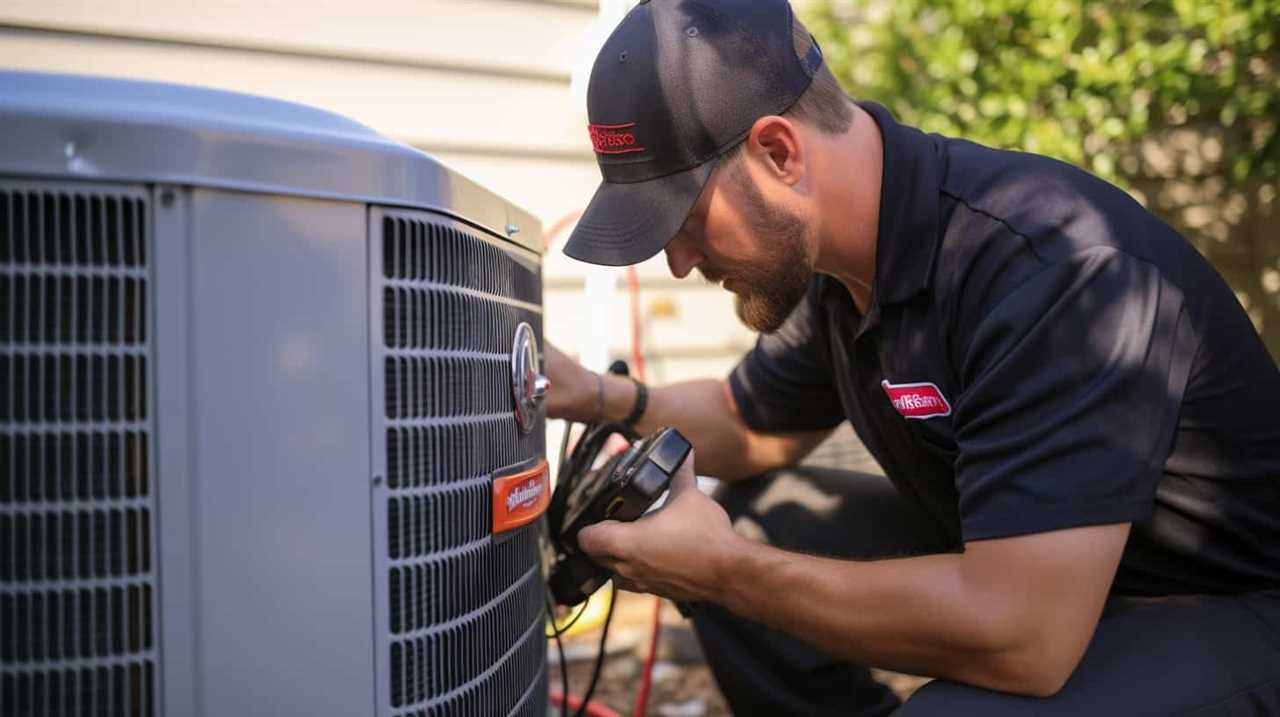
Importance of Energy Ratings
We should consider energy ratings as they provide valuable information about the efficiency of heat pumps. Understanding the energy efficiency benefits and reducing our carbon footprint are crucial factors in making informed decisions about our heating systems.
When it comes to energy ratings for heat pumps, there are four key points to keep in mind:
- SEER (Seasonal Energy Efficiency Ratio) measures the cooling efficiency of the heat pump during the summer months.
- HSPF (Heating Seasonal Performance Factor) measures the heating efficiency of the heat pump during the winter months.
- EER (Energy Efficiency Ratio) measures the cooling efficiency of the heat pump at a specific outdoor temperature.
- COP (Coefficient of Performance) measures the ratio of heat output to electrical energy input.
Considering these energy ratings will help us compare the efficiency levels of different heat pumps and make the best choice for our energy-saving goals.
Comparing Efficiency Levels
To truly understand the efficiency levels of heat pumps, it’s essential that we regularly compare and analyze their energy efficiency ratings. These ratings provide valuable information about the performance and cost effectiveness of different heat pump models.

When comparing efficiency levels, it’s important to consider both the Seasonal Energy Efficiency Ratio (SEER) and the Heating Seasonal Performance Factor (HSPF). SEER measures the cooling efficiency of the heat pump, while HSPF measures its heating efficiency. A higher SEER or HSPF rating indicates a more efficient heat pump, resulting in lower energy consumption and reduced operating costs.
Additionally, choosing a high-efficiency heat pump can have a positive environmental impact by reducing greenhouse gas emissions.
Now, let’s explore the cost versus energy savings aspect of heat pumps.
Cost Vs. Energy Savings
As we delve into the topic of cost versus energy savings for heat pumps, it’s crucial to understand the significance of energy efficiency ratings. These ratings provide a standardized way to compare the energy consumption of different heat pump models.

Here are four key points to consider when analyzing the cost and energy savings of heat pumps:
-
SEER (Seasonal Energy Efficiency Ratio): This rating measures the cooling efficiency of the heat pump during the cooling season.
-
HSPF (Heating Seasonal Performance Factor): This rating measures the heating efficiency of the heat pump during the heating season.
-
Energy Star Certification: Look for heat pumps with the Energy Star label, as they meet strict energy efficiency guidelines set by the U.S. Environmental Protection Agency.
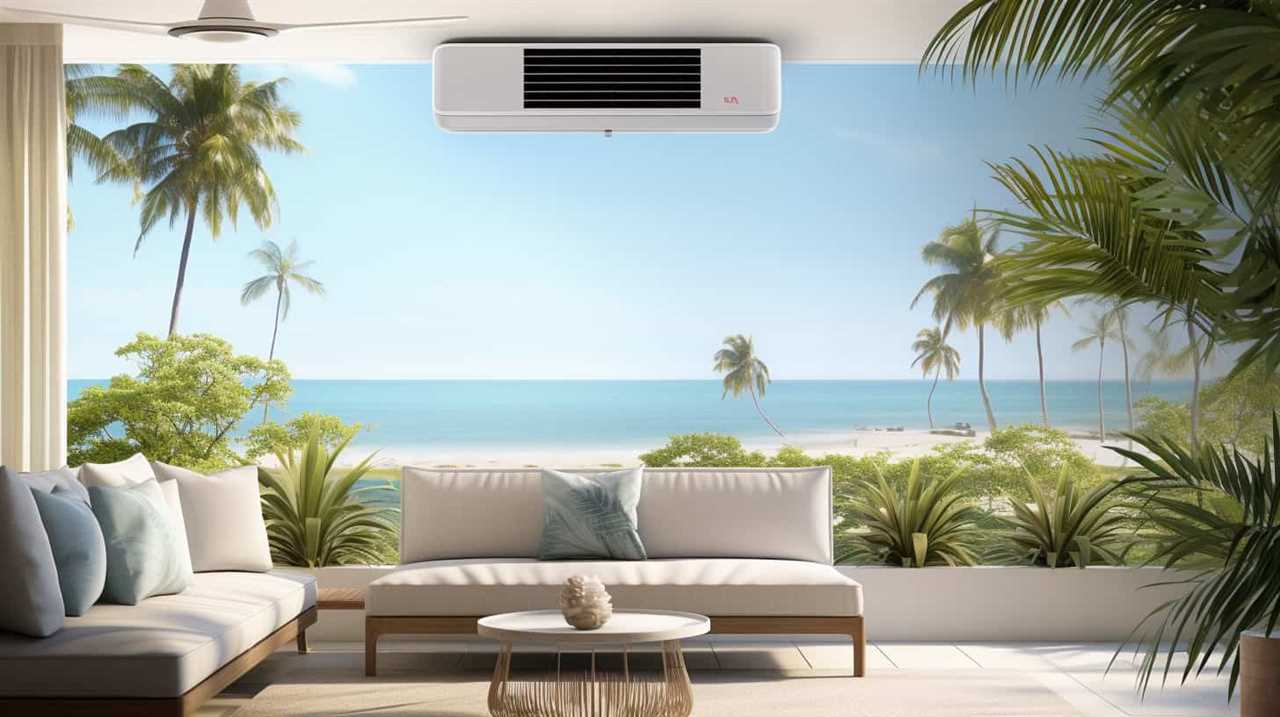
-
Cost Analysis: Calculate the potential energy savings and compare it with the initial cost of the heat pump to determine the payback period.
How Heat Pumps Can Reduce Your Electric Bills
Heat pumps offer a cost-effective solution to lower your electric bills. By maximizing heat pump performance, you can enjoy significant benefits in terms of energy efficiency and cost savings.
Heat pumps work by transferring heat from one area to another, rather than generating it from scratch. This means that they require less electricity to operate compared to traditional heating and cooling systems. In fact, heat pumps can provide up to 4 times the amount of energy they consume. This translates to substantial reductions in your electric bills.
Additionally, heat pumps are highly efficient in both heating and cooling modes, making them a versatile option for year-round comfort. With their ability to reduce electricity consumption and provide efficient heating and cooling, heat pumps are an excellent choice for homeowners looking to lower their electric bills.

Now, let’s explore how to choose the right size heat pump for your home.
Choosing the Right Size Heat Pump for Your Home
When selecting a heat pump for our home, we must consider the right size to ensure optimal performance and efficiency. Here are four key factors to consider when choosing the right size heat pump for your home:
-
Square footage: Calculate the square footage of your home to determine the heat pump capacity needed. A larger home will require a larger heat pump to adequately heat or cool the space.
-
Insulation: Take into account the level of insulation in your home. Well-insulated homes will require less heating and cooling capacity, while poorly insulated homes will need a larger heat pump to compensate.

-
Climate: Consider the climate in your region. Warmer climates may require a smaller heat pump, while colder climates will need a larger one to handle extreme temperatures.
-
Energy efficient home design: If your home is designed with energy efficiency in mind, you may be able to choose a smaller heat pump without sacrificing comfort.
By carefully considering these factors during heat pump installation, you can ensure that your home is equipped with the right size heat pump for optimal performance and efficiency.
In the next section, we’ll discuss how to maximize energy savings with heat pump thermostats.
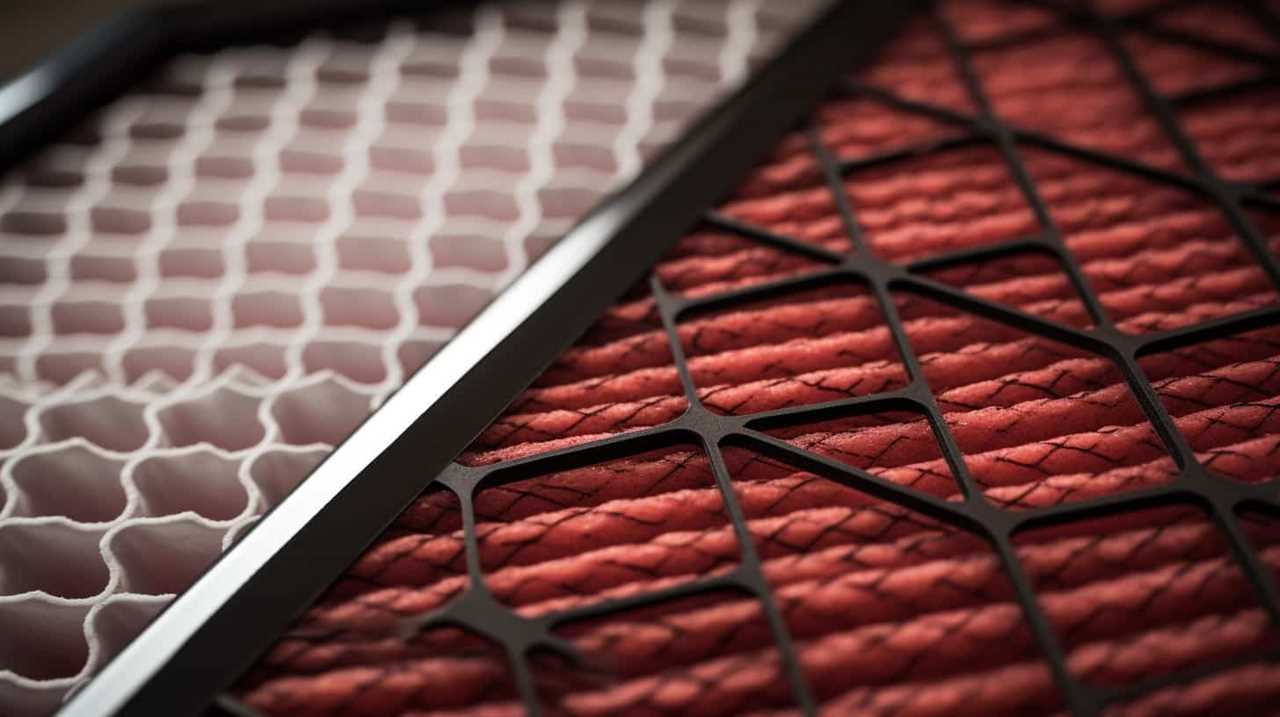
Maximizing Energy Savings With Heat Pump Thermostats
To achieve maximum energy savings, we can optimize our heat pump’s efficiency by utilizing high-quality thermostats and implementing smart programming. When it comes to heat pump installation, it’s important to choose a thermostat that’s compatible with your specific model. Look for a thermostat that offers advanced features such as programmable schedules, remote access, and energy usage monitoring.
By programming your thermostat to adjust temperatures based on your daily routines and occupancy patterns, you can ensure that your heat pump operates efficiently and only when needed. Additionally, some thermostats have learning capabilities that adapt to your preferences over time, further maximizing energy savings.
It’s crucial to regularly review and adjust your thermostat settings to ensure optimal performance and energy efficiency.
Tips for Proper Heat Pump Maintenance to Boost Efficiency
When it comes to maintaining the efficiency of your heat pump, following seasonal maintenance recommendations is crucial. Regularly cleaning or replacing air filters, checking and cleaning the outdoor unit, and inspecting the ductwork for leaks are essential tasks to ensure optimal performance.

However, it’s equally important to avoid common maintenance mistakes such as neglecting to schedule professional inspections or attempting DIY repairs without proper knowledge and tools.
Seasonal Maintenance Recommendations
Here are five essential tips to ensure proper heat pump maintenance for maximum efficiency:
-
Regularly clean or replace air filters: Dirty filters can restrict airflow and reduce heat pump efficiency. Clean or replace filters every one to three months, depending on usage.
-
Inspect and clean outdoor unit: Remove any debris, leaves, or dirt from the outdoor unit. Trim vegetation around the unit to ensure proper airflow. Check for any signs of damage or wear.

-
Check and clean coils: Clean the evaporator and condenser coils to remove dirt and debris. Dirty coils reduce heat transfer and can lead to system inefficiency.
-
Verify thermostat settings: Ensure that the thermostat is set to the correct mode (heating or cooling) and temperature. Adjust settings to meet your comfort needs while maximizing energy efficiency.
Performing these tasks as part of a seasonal maintenance checklist can help troubleshoot common issues and ensure your heat pump operates at its peak efficiency, reducing energy costs and providing optimal comfort.
Common Maintenance Mistakes
We often overlook the importance of regular filter cleaning and outdoor unit inspection, but these maintenance tasks are crucial in boosting heat pump efficiency. Neglecting these common maintenance challenges can lead to decreased performance and higher energy bills.

One common mistake is failing to clean or replace the air filters regularly. Dirty filters restrict airflow, forcing the heat pump to work harder and consume more energy.
Outdoor unit inspection is another important maintenance task that’s often overlooked. Over time, the outdoor unit can become clogged with dirt, leaves, or debris, hindering its ability to transfer heat effectively. Regularly inspecting and cleaning the outdoor unit can help troubleshoot heat pump issues and ensure optimal performance.
Exploring Inverter Technology in High-Efficiency Heat Pumps
One of the key benefits of inverter technology in high-efficiency heat pumps is that it allows us to maximize energy savings and reduce electricity costs. Here are four reasons why inverter technology is advantageous:
-
Energy Efficiency: Inverter technology allows the heat pump to adjust its speed and capacity based on the heating or cooling demand. This results in more precise temperature control and reduces energy wastage.
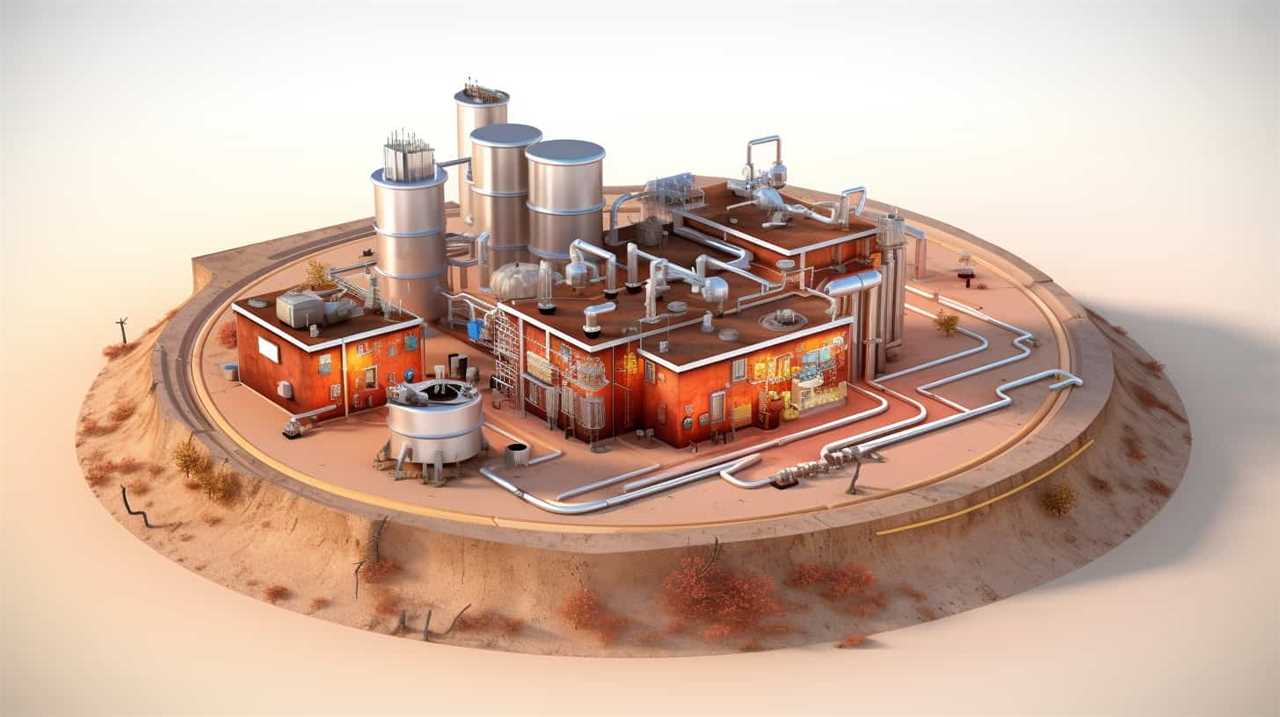
-
Increased Comfort: With inverter technology, the heat pump can maintain a consistent temperature by continuously adjusting its output. This eliminates temperature fluctuations and ensures a comfortable indoor environment.
-
Quieter Operation: Traditional heat pumps often produce loud noise when starting or stopping. Inverter technology minimizes these abrupt transitions, resulting in a quieter and more peaceful operation.
-
Longer Lifespan: By avoiding frequent on/off cycles, inverter technology reduces wear and tear on the heat pump’s components. This can extend the lifespan of the system, resulting in fewer repairs and replacements.
While inverter technology offers numerous benefits, it’s important to consider a few drawbacks. These may include higher upfront costs and the requirement for professional installation and maintenance. However, the long-term energy savings and improved comfort make inverter technology a worthwhile investment for reducing electricity costs.

The Role of Insulation in Optimizing Heat Pump Efficiency
To maximize heat pump efficiency, we must ensure that insulation is properly installed and maintained throughout the building. The type of insulation used plays a crucial role in reducing heat loss and optimizing the performance of the heat pump.
Common insulation types include fiberglass, cellulose, and spray foam. Fiberglass insulation is cost-effective and widely used, while cellulose insulation is made from recycled materials and offers excellent thermal performance. Spray foam insulation provides an airtight seal and superior insulation properties.
Proper installation is key to achieving optimal results. It’s important to insulate walls, floors, attics, and ducts to prevent heat transfer and maintain a comfortable indoor temperature. By investing in high-quality insulation and ensuring its proper installation, you can significantly improve the efficiency of your heat pump and reduce energy consumption.
Transitioning into the subsequent section about financing options, let’s explore how you can upgrade to a high-efficiency heat pump without breaking the bank.

Financing Options for Upgrading to a High-Efficiency Heat Pump
Our article will now explore the various financing options available for upgrading to a high-efficiency heat pump. Upgrading to a high-efficiency heat pump can provide numerous benefits, such as reduced energy consumption and lower electric bills.
To help you finance this upgrade, here are four options to consider:
-
Energy Efficiency Loans: Many financial institutions offer specialized loans for energy-efficient home improvements, including high-efficiency heat pumps. These loans often have low interest rates and flexible repayment terms.
-
Rebate Programs: Check with your local utility company or government agencies for rebate programs that incentivize the installation of high-efficiency heat pumps. These programs can provide financial assistance or tax credits to offset the cost of upgrading.
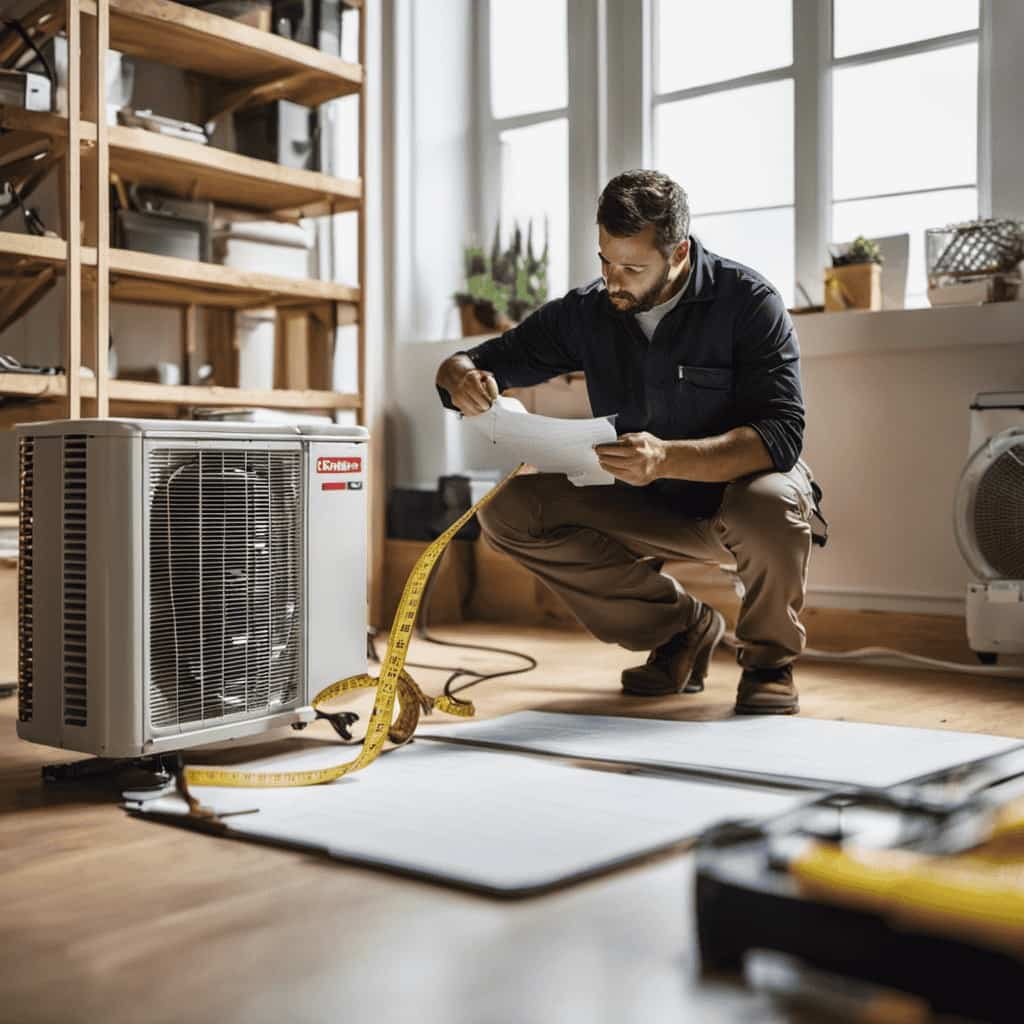
-
Financing Through Manufacturers: Some heat pump manufacturers offer financing options directly to consumers. These programs may include low or zero-interest financing for qualified buyers.
-
Home Equity Loans or Lines of Credit: If you have equity in your home, you may be able to use a home equity loan or line of credit to finance the purchase and installation of a high-efficiency heat pump. These options typically have competitive interest rates and longer repayment terms.
Frequently Asked Questions
Are High-Efficiency Heat Pumps Suitable for All Types of Homes?
High-efficiency heat pumps are suitable for all types of homes, including small and older homes. They offer energy savings and reduce electric bills. These pumps efficiently heat and cool homes, making them a cost-effective and sustainable option.
How Long Does It Take to Recoup the Cost of Installing a High-Efficiency Heat Pump?
On average, it takes about 5-10 years to recoup the cost of installing a high-efficiency heat pump. However, the long-term cost savings and energy efficiency make it a worthwhile investment for homeowners.

Can High-Efficiency Heat Pumps Be Used for Both Heating and Cooling?
Yes, high-efficiency heat pumps can be used for both heating and cooling. They offer improved heating and cooling efficiency, reducing energy consumption and lowering electric bills. The benefits of using high efficiency heat pumps are significant.
Are There Any Tax Incentives or Rebates Available for Purchasing a High-Efficiency Heat Pump?
Tax incentives and rebates are available for purchasing high-efficiency heat pumps. They can help offset the cost and encourage energy savings. These incentives vary by location, so it’s important to research what is available in your area.
What Are Some Common Problems or Issues That Can Occur With High-Efficiency Heat Pumps?
Common maintenance and troubleshooting techniques for high-efficiency heat pumps include regular filter cleaning, checking for refrigerant leaks, and ensuring proper airflow. These practices help optimize performance and prevent potential issues.
Conclusion
In conclusion, high-efficiency heat pumps offer a promising solution for slashing electric bills. With their energy efficiency ratings, proper sizing, and advanced technology like inverter technology, these heat pumps can maximize energy savings.
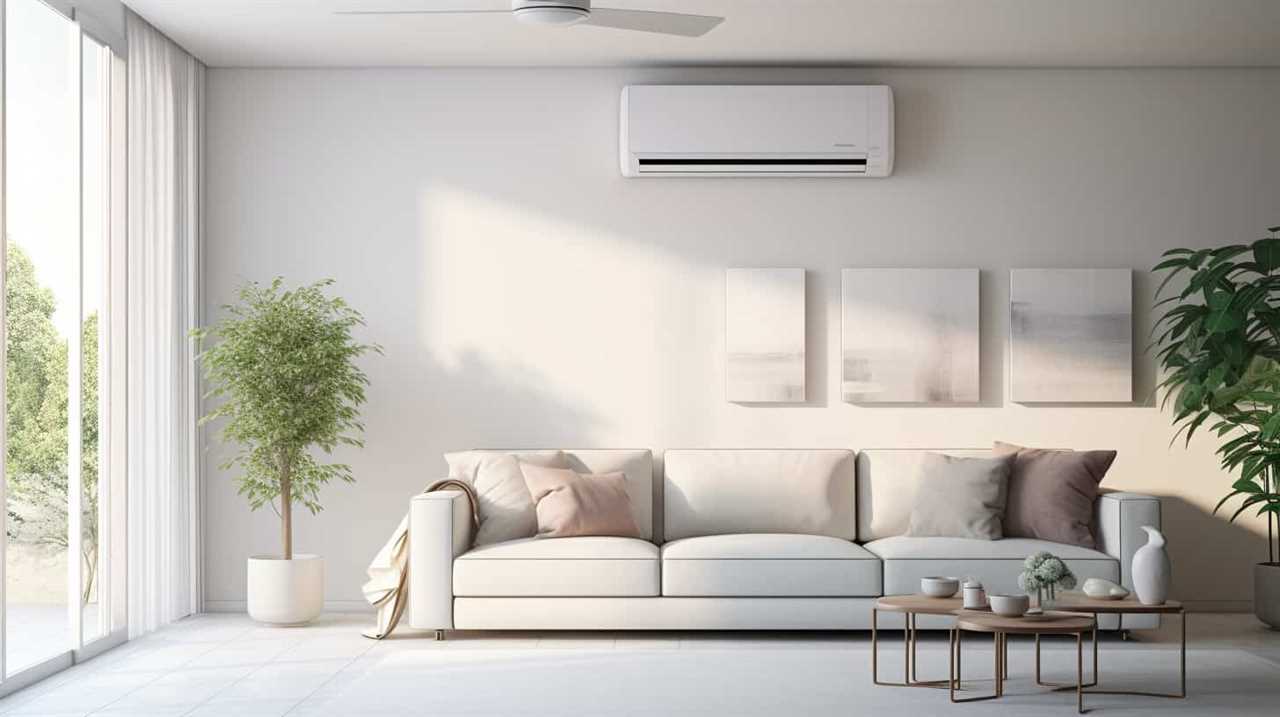
Additionally, proper maintenance and insulation play a crucial role in optimizing heat pump efficiency. By upgrading to a high-efficiency heat pump and taking advantage of financing options, homeowners can enjoy significant cost savings while reducing their environmental footprint.
The suspense of these potential savings is sure to evoke excitement and motivation in the audience.



